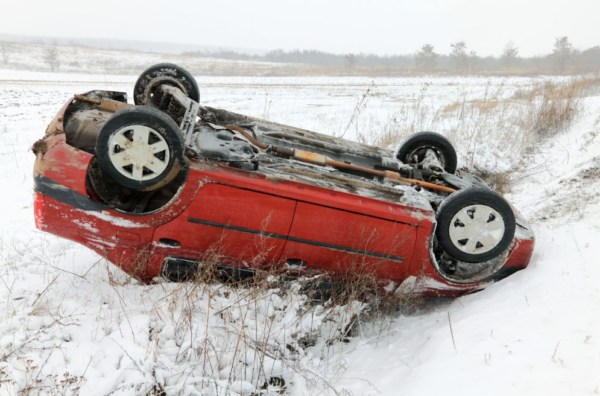As the winter season approaches, snowfall’s serene beauty often brings a host of challenges for vehicle owners. The scenic landscape can quickly become difficult for your car, with risks ranging from falling icicles to treacherous icy roads.
Understanding the nuances of car insurance in the context of snow damage becomes paramount to safeguarding your vehicle during these colder months.
Comprehensive Coverage for Snow-Related Damage
Comprehensive car insurance offers essential protection against winter-related damages, acting as a safeguard for your vehicle in the colder months. It covers a range of incidents that winter can throw your way, from icicles falling and damaging your windshield to the heavy snow denting your car’s body. With this type of coverage, after you pay the set deductible amount, you won’t have to worry about the financial burden of repairing or replacing your windshield and other parts of your car that might get damaged due to winter’s harsh conditions.
Collision Coverage for Accidents in Snowy Conditions
Collision coverage is essential in snowy conditions, turning treacherous roads into manageable risks. Like comprehensive insurance, it’s optional but vital for winter driving. It covers you if you slide on ice or collide with something, helping with repair costs after your deductible. It’s a key part of staying protected against winter’s driving challenges.
Liability and Medical Coverage in Snow-Related Accidents
Winter driving can be unpredictable, and even the most cautious drivers can find themselves deemed at fault in an accident. In such scenarios, your auto policy’s liability coverage is crucial. In contrast, if you or your passengers sustain injuries in an accident where you’re at fault, medical payment coverage or personal injury protection comes into play.
These coverages assist in managing medical expenses, providing a safety net for you and your passengers during the unforgiving winter months.
Preventing Snow Damage and Winter Car Accidents
Prevention is always better than cure, especially when navigating winter’s challenges. Here are several strategies to minimize the risk of snow damage and accidents:
Opt for Covered Parking
Pour your vehicle into covered areas whenever possible. This simple step can protect your car from direct snowfall, falling icicles, and accumulating snow loads.
Steer Clear of Risk Zones
Avoid parking under ledges, tree branches, or areas prone to icicle formation. Such spots increase the risk of snow-related damage to your vehicle.
Drive With Caution
Snow and ice transform roads into slippery surfaces. Driving slowly and carefully can significantly reduce the risk of accidents.
Beware of Black Ice
Black ice, a thin coat of highly transparent ice, is notorious for causing accidents. Recognizing and navigating black ice is crucial for safe winter driving.
Avoid Bad Weather Driving
If the weather forecast predicts severe conditions, reconsider your need to drive. Staying off the roads during extreme weather can prevent potential accidents.
Prepare for Slides
It is invaluable to understand how to control your car if it begins to slide on snow or ice. Practice and knowledge can prevent panic-driven mistakes in critical moments.
Additionally, regular vehicle maintenance is essential. A pre-winter check-up by a qualified mechanic can identify and rectify issues exacerbated by cold temperatures, such as battery problems, tire conditions, and fluid levels.
Conclusion
Winter brings unique challenges for vehicle owners, from the risk of snow damage to the perils of icy roads. Comprehensive and collision coverages shield against these seasonal threats, providing peace of mind amidst the frosty landscape.
However, the optional nature of these coverages underscores the importance of being proactive in securing your vehicle’s protection. Coupled with preventive measures and mindful driving, you can navigate the winter season safely, ensuring your vehicle remains a reliable companion through the snow and beyond.
FAQs
What if snow removal damages my car?
If your vehicle incurs damage from snow removal operations, such as a snow plow hitting your car or scratching it while removing snow, this can be covered under your comprehensive coverage. It’s important to document the damage and report it to your insurance company as soon as possible.
Does car insurance cover damage from hitting a snowbank?
Hitting a snowbank can cause significant damage to your vehicle. This type of accident would typically fall under collision coverage since it involves a collision with an object. Ensure you have collision coverage in your policy to be protected against such incidents.
Can I get a discount on my car insurance for winter-proofing my vehicle?
Some insurance companies offer discounts for winter-proofing your car, such as installing winter tires or adding anti-theft devices. It’s a good practice to check with your insurance provider to see if they offer any discounts for winter-preparation measures.
How does winter weather affect my insurance rates?
While winter weather itself doesn’t directly affect insurance rates, the increased risk of accidents due to snow and ice can lead to higher claims in certain regions, which may indirectly influence insurance premiums over time. Maintaining a good driving record, even in winter, can help keep your rates lower.
Get the right coverage for your car with tutenagency
New tutenagency customers?
Quote auto insurance online or call (334) 502-5111 to insure your vehicle.
Legal Disclaimer: ADVERTISING MATERIAL ONLY. Do not rely on this site or this article for legal or financial advice. The information provided on 210agency.com is strictly for educational purposes and to provide you with general educational information. Since state laws and financial regulations are subject to change, please schedule an appointment with an attorney or qualified financial advisor in your area to further discuss your personal situation. This public information is neither intended to, nor will it, create an attorney-client or financial representative relationship.

